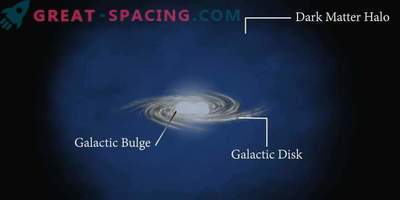
Astronomers are well aware of the fact that the vast majority of matter in our Universe is invisible or "dark." So what the hell is this? Well, now we have a good idea about what it probably is not.
After analyzing a large number of observations recorded by the NASA Fermi Space Telescope, the researchers found that the type of hypothetical dark matter particles, known as axion-like particles, are either not the main player in the dark matter game or simply do not exist.
Axion-like particles are believed to be created under certain quantum interactions, but they have a strange quality that can be measured if they pass through strong magnetic fields. Although these particles are believed to be very light - with a "weight" of less than one millionth electron mass - the Universe could be filled with them, creating a huge gravitational mass, therefore axions could be where most of the Universe mass is hidden.
But axion-like particles, or "Alps," can manifest themselves in a very subtle way. Under certain conditions, in other cases, “invisible” ALPs can turn into photons, particles responsible for the transmission of light. Thus, we are not able to directly see these dark particles of matter (since dark matter does not interact with the help of electromagnetic forces), but we can see, of course, photons (which are exchange particles of electromagnetic interaction). To test this idea, physicists analyzed the emission of gamma radiation from a very bright galaxy called NGC 1275 in a cluster of galaxies in Perseus, at a distance of about 240 million light years from Earth. Between us and this galaxy are some powerful magnetic media through which any photons or dark particles of matter would have to pass. So, if a certain type of ALP does exist, their transformations from the dark matter particle to the gamma photon and vice versa must be detected. However, such transformations, until now, have not been found for 6 years of gamma observations with the Fermi telescope.
“With the Alps, we could explain a certain amount of dark matter,” said Manuel Meyer, a pre-doctoral student and research fellow at the Physics Department of the University of Stockholm. "What is particularly interesting is that with our analysis we achieve such sensitivity that could be expected in future experiments on Earth."
Researchers hope to collect more data using Fermi, but it seems that either these types of ALPs do not work as we expect, or they do not exist, probably deleting them from the search for dark matter











































